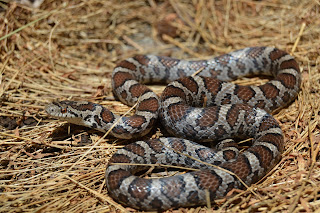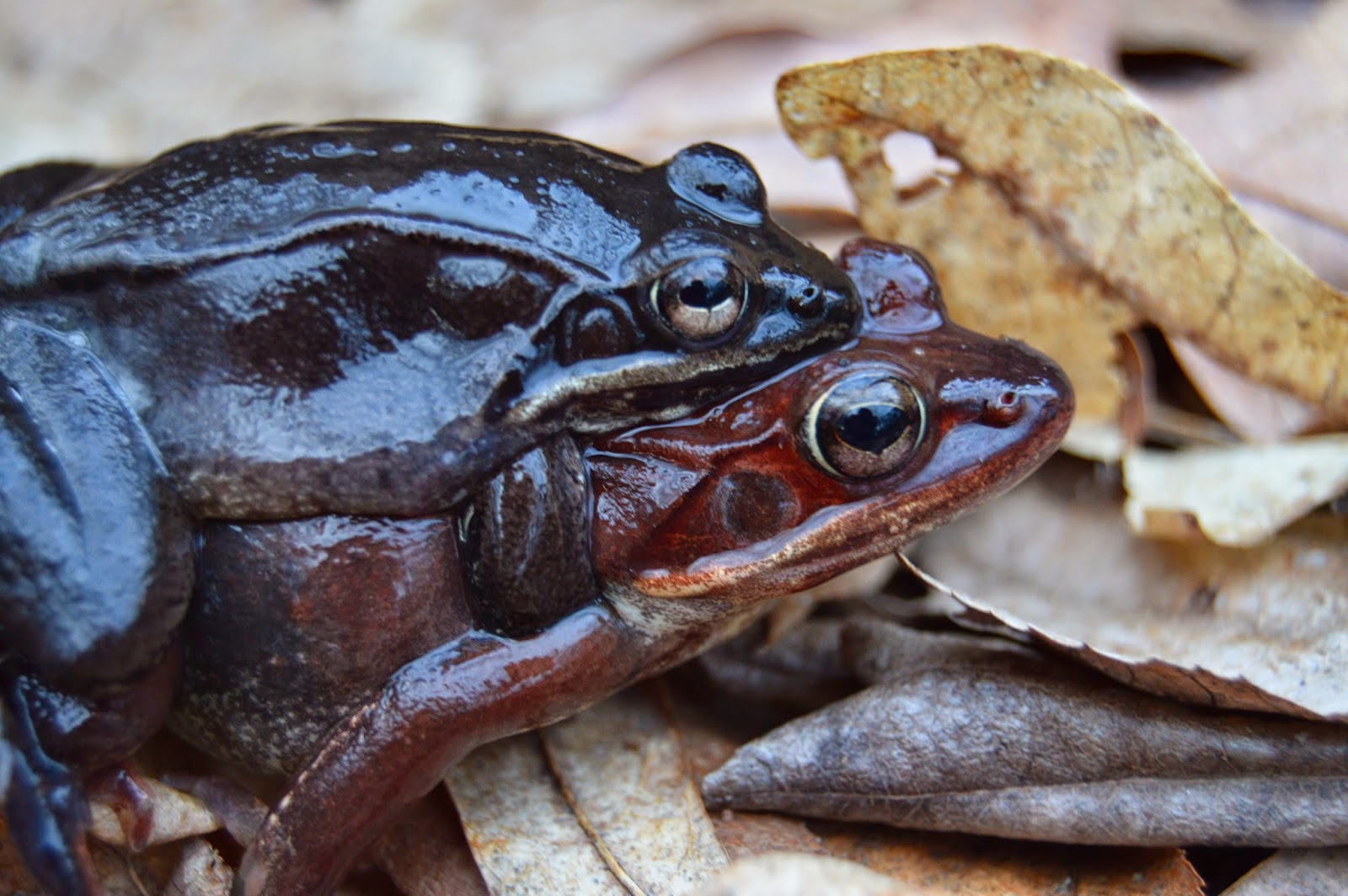This year, winter stayed for an extended amount of time. The winter was one of the coldest I could remember, and it lasted well into march. Here is a vernal pool in march, still surrounded by snow and mostly covered by ice.
The weather finally started to look favorable for a amphibian migration, and I decided to go out. Up until this point the weather was not quite right. We would get nearly perfect conditions and then the temperature would drop. This night was forecasted to have warm temperatures and heavy rain. I headed out to one of the busiest amphibian crossings in the state.
Planning this trip was a guessing game, because unlike normal, the temperatures were inconsistent and few amphibians could be found. Normally, before the migration one might be able to hear spring peepers calling or find a red backed salamander, but this was not the case.
spotted and jefferson salamanders
Jefferson Salamander (Ambystoma Jeffersonianum)
As we drove along the road, we could see spring peepers crossing. We continued to drive in the pouring rain, and we were excited to see several salamanders slithering across the wet road. After parking the car, we walked up and down the section of road, helping wood frogs, spring peepers, jefferson and spotted salamanders across.
Red Backed Salamander (Plethodon Cinereus)
The next day, it seemed that the rain had also awakened the amphibians back home.
Wood Frog (Lithobates Sylvaticus)
While walking by a vernal pool, I was pleased to hear the quaking of male wood frogs.
Although I had such a great experience the other night, I was not satisfied with my pictures of spotted and Jefferson salamanders. It was so hard to photograph the creatures in the dark and the pouring rain. I decided to head back to the vernal pool crossing site.
It took a little while but I was glad to to find two individuals under a large log near the edge of the pool. It was a much cooler day, so the salamanders were more sluggish, and they were partially buried when found. It was only a few yellow spots protruding from the soil that gave them away.
Spotted Salamander (Ambystoma Maculatum)
Despite my searches I found no Jefferson salamanders, but this gave me a reason to return.
Male wood frog calling. Wood frogs have their vocal sacks on the sides.
Wood frog pair. Darker male on top, female on the bottom.
Wood frog egg masses in pool
Egg masses in hand
Back home, the wood frogs were much further along in breeding. It was apparent that the females had arrived and that they had begun to lay their eggs.
I also spotted a green frog in a creek near home.
The day had been unusually warm and rain was forecasted for that night. I decided to go back out the the road crossing again. As we drove out, things started to look bad. The rainy weather disappeared from the forecast, and without rain, there would be no salamanders. Fortunately, it was extremely humid and it had rained earlier in the day. We decide to head down to the vernal pool first.
American Toad (Bufo Americano)
On the way down we noticed that the warmer weather had brought out some creatures, like this american toad, typically seen a little later in the season.
Pickerel Frog (Lithobates palustris)
Another creature that arrived a little early.
At the pool the chorus of spring peepers was deafening. Spotted salamanders also bred in the water.
Spring peeper (Psuedachris Crucifer)
After photographing the calling amphibians, we headed up toward the road. The warm fog had picked up into a mist, which gave us hopes of finding some more salamanders. I still wanted to get a better picture of a Jefferson Salamander.
Wood Frog (Lithobates Sylvaticus)
We ran into this vibrant female wood frog on her way down to the chorus of frogs at the pool.
At the road, a few spotted salamanders were crossing. As we were about to leave, I had given up on the hope of finding a jefferson salamander. While walking the road we heard a lady shout out that she found a jefferson salamander. I eagerly received the salamander from her and began to photograph it.
Jefferson salamander (ambystoma Jeffersonianum)
The jefferson salamander is a species of special concern in New Jersey. Just like the other amphibians, road mortality is a major problem for the species. The salamanders venture down from forested hillsides to vernal pools, and often must cross roads.
This salamander did not feature as nice colors as the one from the other night, but it was still a neat looking salamander.
So far the spring herping season has been off to a great start. There are a few spring species that have not yet been covered, but hopefully I will post about them soon. As the weather gets warmer, more species will wake up from their hibernation, so those will make the post as well.

































































